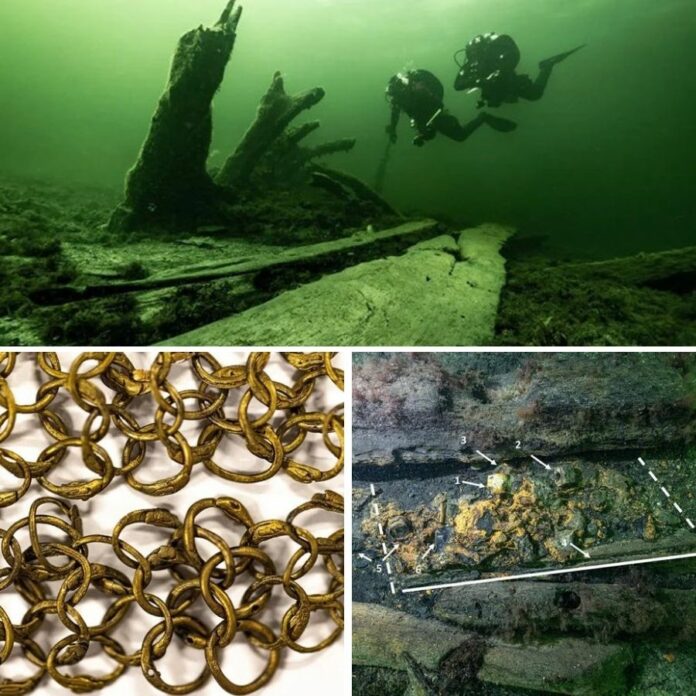The sunken warship Gribshunden continues to astonish archaeologists and historians with its wealth of discoveries. Resting near Ronneby, Sweden, since its catastrophic sinking in 1495, this Danish royal flagship offers an unparalleled glimpse into naval technology and maritime life during the late Middle Ages. Recent investigations, led by researchers from Södertörn University and Stockholm University, have uncovered invaluable artifacts and structural insights, cementing the Gribshunden’s place as one of the best-preserved ships from the Age of Exploration.
Historical Background
The Gribshunden was no ordinary ship—it was a marvel of its time, representing the pinnacle of medieval naval engineering and serving as a symbol of Danish power under King John I. Built in the late 15th century, the ship played a pivotal role in Denmark’s maritime dominance. Its mission in 1495 was a diplomatic one, transporting King John from Copenhagen to Kalmar to forge alliances. However, a devastating explosion caused the Gribshunden to sink, claiming its strategic importance and consigning it to centuries beneath the Baltic Sea.
Rediscovered in the 1970s, the ship’s identity remained a mystery until 2013 when its significance as King John’s flagship was confirmed. Since then, it has been the focus of extensive research, revealing a trove of cultural, technological, and historical artifacts.
Initial Discovery and Excavation Efforts
The wreck was initially discovered by a diving club in the 1970s, but it was not until decades later that researchers identified it as the Gribshunden. In 2013, its historical significance was established, marking the beginning of a series of meticulous excavations. These efforts have uncovered artifacts that provide critical insights into medieval naval architecture and warfare.
The ship is particularly remarkable for its preservation. Unlike many other wrecks from the period, the Gribshunden has survived in astonishing detail, offering researchers an almost intact time capsule of late medieval naval life.
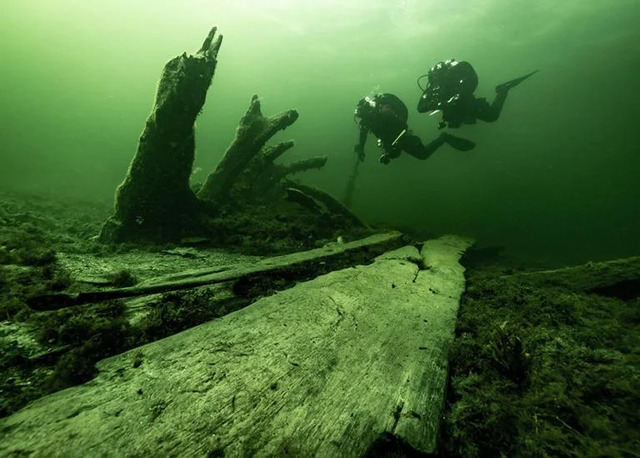
Key Discoveries
Among the most fascinating finds is an ammunition-making tool chest, described by researcher Rolf Warming as one of the most important discoveries aboard the ship. This wooden chest contained lead plates, molds, and cylindrical containers believed to have been used for storing gunpowder. These items illustrate the advanced weaponry technology employed by the Gribshunden, highlighting its strategic role in medieval naval combat.
Fragments of mail armor, another key discovery, provide further insight into the ship’s military functions. These pieces, meticulously analyzed by researchers, reveal details about their construction and the extensive repairs conducted by soldiers of the time. Professor Kerstin Lidén from Stockholm University’s Archaeological Research Laboratory emphasized the intricate craftsmanship of these fragments, underscoring the ship’s preparedness for combat.
The ship’s superstructure, particularly the fore and aft castles, has also been extensively studied. These elevated combat platforms were critical for medieval naval warfare, offering vantage points for archers and gunners. Using photogrammetric 3D mapping, researchers have reconstructed these structures, providing a clearer picture of the ship’s design and capabilities.
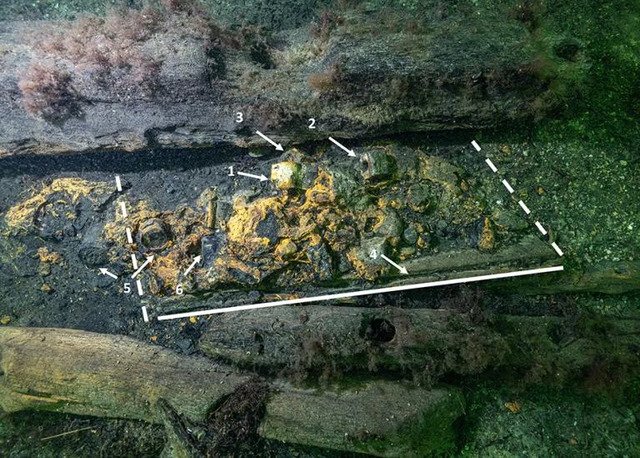
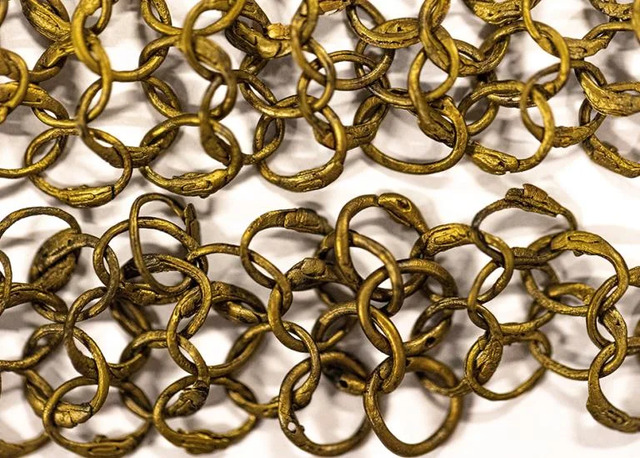
Advanced Research Techniques
The ongoing exploration of the Gribshunden exemplifies the use of cutting-edge technology in archaeology. Photogrammetric 3D mapping has allowed researchers to document the ship’s remains in extraordinary detail, creating digital reconstructions that enhance our understanding of its construction and function. These techniques have been instrumental in preserving the ship’s legacy while enabling further analysis.
Collaboration between institutions has also played a vital role in this research. Organizations such as the National Museum of the Royal Navy and the University of Southampton have joined forces with Swedish archaeologists, bringing together expertise from around the world. Supported by groups like the Voice of the Ocean Foundation, these efforts aim to piece together the ship’s story and its broader significance in naval history.
Cultural and Technological Insights
The discoveries aboard the Gribshunden shed light on the cultural and technological landscape of the late Middle Ages. The ship represents a convergence of innovation and tradition, combining state-of-the-art weaponry with time-tested naval architecture. Its role as a royal flagship underscores the importance of maritime power in medieval politics and diplomacy.
Artifacts such as the ammunition chest and mail armor highlight the ship’s dual role as both a diplomatic vessel and a formidable warship. These items not only reveal the technological sophistication of the era but also offer a glimpse into the lives of the sailors and soldiers who manned the ship. From the weapons they used to the armor they wore, every detail speaks to the ship’s readiness for both combat and ceremonial duties.
Contributions from Key Researchers
The work of researchers like Rolf Warming and Johan Rönnby has been instrumental in uncovering the Gribshunden’s secrets. Warming’s dissertation project, “Soldiers at Sea,” delves into the weaponry technology of late medieval ships, using the Gribshunden as a focal point. Reflecting on his years of work on the wreck, Warming described it as an “adventure,” highlighting the challenges and rewards of studying such a complex site.
Collaborative efforts have brought together experts from various disciplines, including archaeology, maritime history, and material science. This interdisciplinary approach has enriched the research, ensuring that every aspect of the ship’s story is thoroughly examined.
Ongoing Research and Broader Implications
The exploration of the Gribshunden is far from complete. Future excavations and analyses promise to reveal even more about the ship’s construction, armaments, and role in naval history. The findings not only deepen our understanding of the late Middle Ages but also contribute to the broader narrative of maritime innovation.
The Gribshunden’s preservation and study have significant implications for the field of underwater archaeology. As one of the best-preserved ships from the Age of Exploration, it serves as a benchmark for future research, demonstrating the potential of modern technology to unlock the secrets of the past.
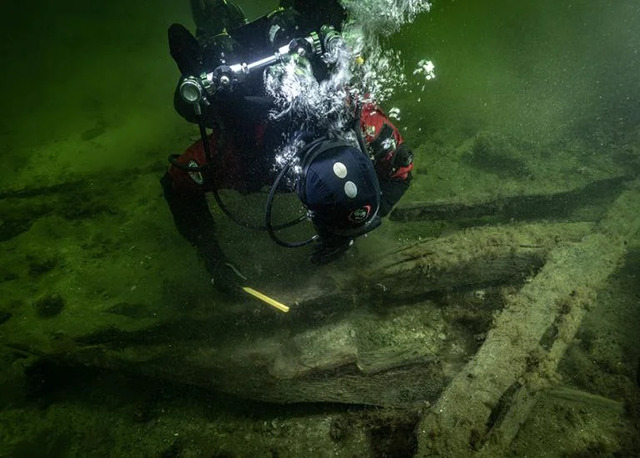
Conclusion
The Gribshunden is more than a sunken ship; it is a time capsule that offers a rare glimpse into the naval technology, warfare, and diplomacy of the late Middle Ages. From its advanced weaponry to its meticulously constructed armor, every discovery aboard the ship adds to our understanding of this fascinating period in history. As researchers continue to study the wreck, the Gribshunden’s story will undoubtedly inspire future generations to explore the depths of history.
